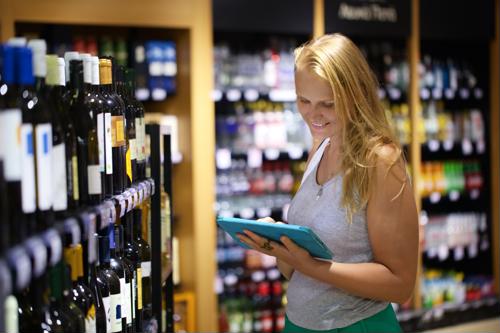The Importance of the Digital Shelf and the Endless Aisle (Examples)
Written By: Cara Wood
The Takeaway: Today's buyers often discover your products on a digital shelf. The medium allows for an endless aisle of product options for them to scroll through. By focusing on the quality of your product content, you can improve how products look online and ultimately ensure that buyer experience is a positive and productive one.
In addition to standard retail buzzwords - ecommerce, distributed commerce, click-and-collect, bricks-and-clicks - you've likely begun to hear the terms: digital shelf and endless aisle. It's important to add these important phrases to put in your arsenal and understand the impact they can have on your brand's strategy.
What is a digital shelf?
A digital shelf is composed of third-party ecommerce sites, mobile apps and your product pages. In other words, a digital shelf is where your products are displayed. It's pretty much any digital channel where your customers can view your brand's items and click "buy."
"A digital shelf is how shoppers discover your products."
In that sense, a digital shelf - like a physical one - is how shoppers discover your products. And just like a physical shelf, you control the appearance of your items.
What is an endless aisle?
In the age of distributed commerce, an endless aisle is a brand's ability to present its full catalog of products and accessible content online. Consumers have the ability to order products from any business at any time. In response, retailers want to host the widest array of product selection in order to provide consumers an endless aisle of products on their retail site rather than risk losing the sale to another website with the content.
Winning brands are the one's who take the endless aisle into account as part of their strategy - ensuring the fullest range of products are appearing on relevant websites and the digital content that supports them is compelling. Retail partners are increasingly demanding this extensive level of product content from each brand they work with.
How can digital shelves and the endless aisle lead to better sales?
In today's distributed commerce world, you need to catch shoppers' eyes without relying on eye-level placements. How can you tell consumers about your products without using packaging or in-person sales representatives? Product content is how you tell your brand's story, list ingredients, convey the appearance of items.
Making your products shine on the digital shelf ensures that consumers can find and purchase those items anywhere. "If it doesn't look good on the digital shelf, it won't move from the physical one," explains our recent white paper, "Winning at Distributed Commerce: A Guide for Brands."
Retailers are asking for more product content than ever, and it's likely that your current strategy is too resource-intensive and manual to have a perfect digital shelf presentation for all of your SKUs for each of those third parties and their requirements. You can leverage retailers' product content requirements to your advantage, as those guidelines and standards give you the opportunity to control how those companies display your product on their digital shelves with respect to their target demographics.
Putting your product content to work for you on the digital shelf
Recently some retailers have begun to rethink customer experience and how to leverage the endless aisle in stores. For example, luxury brand Barneys began delivering personalized videos and look books to shoppers at it's Manhattan flagship store. Buyers create a mobile wishlist, even if the product is not in stock at the store. Similarly, True Religion gave its in-store sales associates wristwatch apps to arm them with customers' purchasing data for more personalized and relevant in-store conversations.
A starting point for any brand is putting a product content experience system in place. It takes dedicated team with the resources, flexibility, and authority to make content decisions quickly in support of sales, marketing, and other corporate departments to enact content & merchandising strategy. This involves creating new processes and investing in new technology to enable the content team to cater to consumers in the new age of retail - digital shelves and endless aisles.
--
Looking for more insider tips to help you win on the digital shelf? Our webinar The Era of Omni-Commerce: New Insights for Dominating the Digital Shelf and Beyond has actionable tips to help you find the right channels, deliver the right content, and drive conversions like never before.
Written by: Cara Wood
Cara Wood (she/her) is a writer and former director of brand journalism at Salsify, where she specialized in creating content to help brands excel in ecommerce. Her work has helped organizations enhance their digital shelf and product experience management strategies.
Recent Posts
Gen Alpha Trends: How the Next Generation Influences Buying Behavior and Decisions
Do Brands Need Social Media Influencers In The Age of AI?
How Can Brands Align With Consumers’ New Year’s Resolutions?
Subscribe to the Below the Fold Newsletter
Standing out on the digital shelf starts with access to the latest industry content. Subscribe to Below the Fold, our monthly content newsletter, and join other commerce leaders.



.svg)